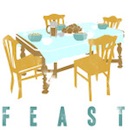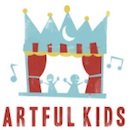This very witness of love intertwines and melds with the aesthetical gift of Inis Cealtra: indeed, the beauty of these ruins forms their ecclesiastical lessons. The stones attest to the labor and handiwork of disciples long ago; arches and elegant stonework attest to the creativity of worship; moss, ivy, and grass attest to the wild edge of praise. These ruins teach us through their longevity, beauty, wildness, openness, emptiness, quietness. They teach us something about the heart of the Church—it is long-lasting, shared, and beautiful.
All in Place
Small Things, Slow Work
To love our city and care about the arts and creativity has been about loving and caring for individual people. And I think for any of us it comes down to that. Loving a city and its people in general doesn’t mean a whole lot. Loving a city and its people in specific, however our callings lead us, means everything.
A Sojourn in Sweden
Twenty years ago this past summer I traveled to the land of my ancestors. A land I had heard about my whole life, a storybook country of lakes and forests and flaxen-haired princesses. Of blue and yellow flags and three golden crowns atop many a spire. It was “the old country” of my grandparents on both maternal and paternal sides. Surnames like Lundberg, Holmberg, Appelquist, Boquist, and Engwall wrapped my childhood in their soft sing-song melodies. And I was one small variation on that theme, about to join the main chorus.
You Are Here to Kneel
I decided that I was the wrong kind of person to visit a monastic order. I was too uncivilized and unlearned, too ornery and idealistic, and maybe even too Protestant. But during our final breakfast with Father Donovan, I scooped jewel-red currant jam I’d helped prepare onto homemade Irish bread and listened to the monk discuss theology, politics, and the proper method of a coffee press. I began to wonder if maybe I'm exactly the right sort after all.
On Honest Art
For a day we considered our deepest disposition, sons of Adam and daughters of Eve that we are: we compartmentalize, we believe one thing to be true and behave as if another thing is true, we say “This matters most!” and then live as if it doesn’t really. This tendency has profound implications, for learning, for labor, for love, for liturgy—for all of who we are, for all of how we live.
How do we begin to find our way to coherence? Can we even imagine a way of seeing and hearing that honestly connects what we believe with the way that we live?
 I don't notice the robin making her nest. Neither do I notice when she lays her eggs. I don't know how long she bides her time there, waiting for their hatching. After two weeks of rain, the kids and I come outside, squint in the sun, and find four tiny beaks stretching up from a nest on our meter box. The mama robin swoops in, drops in her food, and then flies to a nearby branch to keep watch. We are mesmerized.
I don't notice the robin making her nest. Neither do I notice when she lays her eggs. I don't know how long she bides her time there, waiting for their hatching. After two weeks of rain, the kids and I come outside, squint in the sun, and find four tiny beaks stretching up from a nest on our meter box. The mama robin swoops in, drops in her food, and then flies to a nearby branch to keep watch. We are mesmerized.
 It is the first morning of vacation in a friend’s condo. I am looking down on the condo’s private beach from my balcony. From way up here, everyone is small, no one too fat, too sexy, too weak, too old, or too young. They are all just specks of human beings swallowed by a vast dance of blurry sandbars beneath an undulating surf. I arrived last night in the dark and went to sleep. This morning, I try to unkink from regular life stresses. I keep telling myself it’s okay if my thoughts walk away from these relentless concerns. The ocean, meanwhile, forgets with ease, content with humming a tune of waves that massage the air like an oscillating fan, a white noise sound machine rising and falling, over and over, an unending breath-like soundtrack.
It is the first morning of vacation in a friend’s condo. I am looking down on the condo’s private beach from my balcony. From way up here, everyone is small, no one too fat, too sexy, too weak, too old, or too young. They are all just specks of human beings swallowed by a vast dance of blurry sandbars beneath an undulating surf. I arrived last night in the dark and went to sleep. This morning, I try to unkink from regular life stresses. I keep telling myself it’s okay if my thoughts walk away from these relentless concerns. The ocean, meanwhile, forgets with ease, content with humming a tune of waves that massage the air like an oscillating fan, a white noise sound machine rising and falling, over and over, an unending breath-like soundtrack.
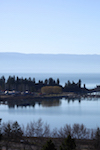 Hospitality is serving people and helping people who are in our home. We listen. If they stay in our home, I fix meals and prepare a bed and so forth for them. I read something about—I think it is Benedict's Rule of Hospitality—that there's a difference between serving and being a servant. When I'm serving, I'm in charge. If I'm a servant, you're part of it. If you want to do something to help me, I'll let you do it because that's allowing you in. You're not being in charge. I'm not being in charge.
Hospitality is serving people and helping people who are in our home. We listen. If they stay in our home, I fix meals and prepare a bed and so forth for them. I read something about—I think it is Benedict's Rule of Hospitality—that there's a difference between serving and being a servant. When I'm serving, I'm in charge. If I'm a servant, you're part of it. If you want to do something to help me, I'll let you do it because that's allowing you in. You're not being in charge. I'm not being in charge.
 I hadn’t realized that a love of art and beauty could be a liability. I was good at art and beauty.
I hadn’t realized that a love of art and beauty could be a liability. I was good at art and beauty.
Was it that day I skipped in high school when my European History class covered Versailles? Was it my childhood? My culture? Am I just a rebel?
For too long, I have loved myself with shopping beyond my means, and the wake of spending leaves me ripped off. Months later, I will learn the phrase God-shaped hole.
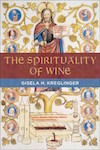 Could it be that God wanted to redeem not only my life but also all the hustle and bustle that life on the winery brings? We work so hard to make a living from growing vines and crafting wine. Could it be that God cared about it and perhaps was even involved in it? This idea is not quite what I had learned in my confirmation classes over the last two years. But was it not true? Had Jesus not made wine as well?
Could it be that God wanted to redeem not only my life but also all the hustle and bustle that life on the winery brings? We work so hard to make a living from growing vines and crafting wine. Could it be that God cared about it and perhaps was even involved in it? This idea is not quite what I had learned in my confirmation classes over the last two years. But was it not true? Had Jesus not made wine as well?
 When I imagine a rich and balanced life, I picture a home much like Sagamore Hill, bustling with active bodies and active minds, where faithful character above all drives the life of the family. One of Roosevelt’s most common phrases for his experiences was great fun. When mind, body, and spirit are working and growing together, life can indeed be great fun, whether on icy river waters or in the comfort of home.
When I imagine a rich and balanced life, I picture a home much like Sagamore Hill, bustling with active bodies and active minds, where faithful character above all drives the life of the family. One of Roosevelt’s most common phrases for his experiences was great fun. When mind, body, and spirit are working and growing together, life can indeed be great fun, whether on icy river waters or in the comfort of home.
 The church was a place of incredible, deliberate, beauty. It had been some time since I’d been in a place of worship so utterly beautiful. As I walked down the main aisle and then the smaller aisles at the south and north portals, my son walked beside me. He’d never been in a church like this. It was his first time to behold, and in his little mind configure, how a church can look like this. Here is a human-made artifact of craftsmanship that, somehow, actually embodies the joy—the nearly incomprehensible reality—of Emmanuel, God with us.
The church was a place of incredible, deliberate, beauty. It had been some time since I’d been in a place of worship so utterly beautiful. As I walked down the main aisle and then the smaller aisles at the south and north portals, my son walked beside me. He’d never been in a church like this. It was his first time to behold, and in his little mind configure, how a church can look like this. Here is a human-made artifact of craftsmanship that, somehow, actually embodies the joy—the nearly incomprehensible reality—of Emmanuel, God with us.
 As spring approaches in Cambridge, I’m switching over to (another) new workplace. My daily routine is shifting again, as the afternoon light grows stronger and the tulips poke up through the ground. But as I adjust to my new rhythm, I know I’ll be continuing my daily trips to Darwin’s. Because it’s delicious and homey and comforting. Because my blood, on some days, is about 20 percent spicy chai. Because I’m a regular. Recognized, welcomed, known. And it feels good.
As spring approaches in Cambridge, I’m switching over to (another) new workplace. My daily routine is shifting again, as the afternoon light grows stronger and the tulips poke up through the ground. But as I adjust to my new rhythm, I know I’ll be continuing my daily trips to Darwin’s. Because it’s delicious and homey and comforting. Because my blood, on some days, is about 20 percent spicy chai. Because I’m a regular. Recognized, welcomed, known. And it feels good.
 To assess the secrets we now possessed, my sister and I dismantled every carefully hoarded collection of Cool Whip containers, Styrofoam meat dishes, “brand new” household appliances, and unworn lace. The things no one could use alongside the things someone might want to use. And then there were the things only she loved, the things that told her who she was and what kind of life she had cherished. Things that tell the story of who she thought she was.
To assess the secrets we now possessed, my sister and I dismantled every carefully hoarded collection of Cool Whip containers, Styrofoam meat dishes, “brand new” household appliances, and unworn lace. The things no one could use alongside the things someone might want to use. And then there were the things only she loved, the things that told her who she was and what kind of life she had cherished. Things that tell the story of who she thought she was.
 Language distinguishes us, but it’s still just empty space. Space I can see but not touch, and that’s not enough. I need to hold onto a meaning with texture, with a sharpness that cuts into my hands, gets in my blood.
Language distinguishes us, but it’s still just empty space. Space I can see but not touch, and that’s not enough. I need to hold onto a meaning with texture, with a sharpness that cuts into my hands, gets in my blood.
If this is so important, why don’t I understand it, why isn’t it obvious?
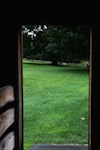 I think fiction writers do have something I lack. They must have the capacity to close their eyes, at least a little bit, to the world outside their window. With eyes half open they are free to imagine. Free to conjure whole worlds and lives. They are magicians as much as artists, and I am the grateful recipient of their magic.
I think fiction writers do have something I lack. They must have the capacity to close their eyes, at least a little bit, to the world outside their window. With eyes half open they are free to imagine. Free to conjure whole worlds and lives. They are magicians as much as artists, and I am the grateful recipient of their magic.
But I cannot close my eyes. Not even a little bit. I write nonfiction because so many memories are tapping at my window, there is no room left in my mind for any invention. I am wholly preoccupied observing and studying that which is already there.
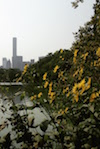 My mother was doubtful, my sister surprised, my friend Abigail wistful. “You’re so brave,” she said. I’m fairly certain they all expected me to be nervous about spending three days in the city alone. But I could hardly keep the glee out of my voice.
My mother was doubtful, my sister surprised, my friend Abigail wistful. “You’re so brave,” she said. I’m fairly certain they all expected me to be nervous about spending three days in the city alone. But I could hardly keep the glee out of my voice.
 Where do we carve out the mystery of not knowing but believing? We forget that our spiritual journey depends upon truths we don’t fully understand, places we have not yet traveled.
Where do we carve out the mystery of not knowing but believing? We forget that our spiritual journey depends upon truths we don’t fully understand, places we have not yet traveled.
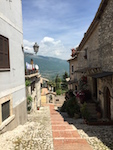 Veroli is just a name on a piece of paper in my mother’s handwriting — part of my grandmother’s history that my mother had written down before my grandmother passed away. Out of pages of stories, there are only a few lines mentioning Veroli.
Veroli is just a name on a piece of paper in my mother’s handwriting — part of my grandmother’s history that my mother had written down before my grandmother passed away. Out of pages of stories, there are only a few lines mentioning Veroli.
“Kind nuns took me in.”
“A town in the hills near Rome.”
“So peaceful.”
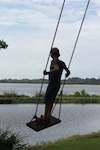 There are places in my history where I came to know myself in real ways. There is land that reminds me who made me. There are hills that sing to me of who my people are, and there’s a road where I ran until I understood the girl that God had created within this lanky frame. These are the places that made me, and when the earth is shifting at home, or when I just forget the truth, these are the places I crave.
There are places in my history where I came to know myself in real ways. There is land that reminds me who made me. There are hills that sing to me of who my people are, and there’s a road where I ran until I understood the girl that God had created within this lanky frame. These are the places that made me, and when the earth is shifting at home, or when I just forget the truth, these are the places I crave.




